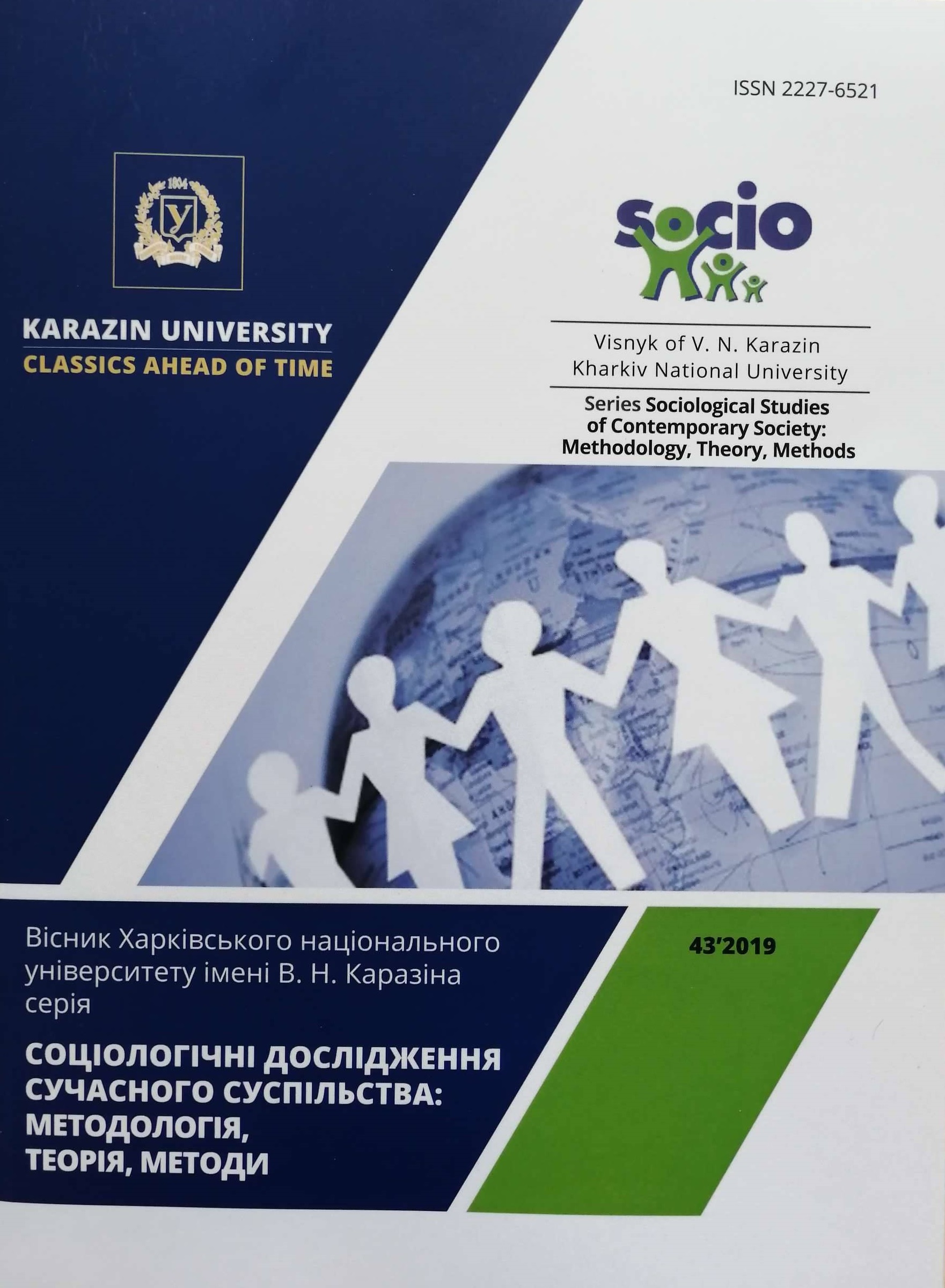Можливості залучення семіотичного підходу до аналізу міського простору
Анотація
Основна увага в статті зосереджена на аналізі евристичного потенціалу семіотичного підходу в дослідження міського простору. Зафіксувавши в якості об’єкту дослідження місто як культурний текст та відштовхуючись від методологічних орієнтирів соціокультурного підходу та постструктуралістських опцій аналізу запропоновану в якості предметної сфери дослідження сприймати знаково-символічний простір міста крізь призму семіотичної оптики. Місто як соціокультурний феномен, відтак, може розглядатися як сукупність знакових об’єктів. В якості теоретичного підгрунття простежено еволюцію поглядів ряду зарубіжних вчених, зокрема зосереджено увагу на наукових роботах таких дослідників як В. Беньямін, Р. Барт, К. Леві-Стросс, Ч. Дженкс, К. Лінч, Г. Зіммель. В якості базисних робіт в напрямку семіотичної аналітики виділено праці Ф. де Соссюра, Ч. Пірса, Ч. Морріса, Ю. Лотмана. Відмічено, що важливим моментом теоретичної еволюції поглядів на семіотичний аналіз є запропоновані положення Ф. де Соссюром щодо стала основою структуралізму і постструктуралізму, дозволяє аналізу мови, як і будь-якої знакової системи, у вигляді структури з фіксованою відповідністю знаків та значень. Дана теза присутня в межах структуралізму та постструктуралізму. Проаналізовано, що ідеї «трикутника Фреге» та «трикутника Одена-Річардса» в дослідженні міст суттєво розширює потенціал урбаністичних досліджень. Підкреслено, що застосування інструментів семіотичного підходу дозволяє поєднати аналітику знаково-символічної системи міста та простору міської повсякденності в напрямку визначення індексних, іконічних, символічних знаків у міському просторі та простеження специфіки процесів денотації ряду об’єктів міського простру – будівель, ландшафтних просторів, публічних місць та транспортних комунікацій.
Завантаження
Посилання
Воронкова В. Г. Планування та прогнозування в умовах ринку: навчальний посібник. Київ: ВД «Професіонал», 2006. 352 с.
Грушко В. Міста у культурно-семіотичному процесі формування геополітичних просторів та зон підвищеної геополітичної напруги. Наукові записки Тернопільського національного педагогічного університету імені Володимира Гнатюка. Серія: Географія. Тернопіль: Терноп. нац. пед. ун-т ім. Володимира Гнатюка. 2014. №2. C. 61-69.
Жулькевська О. В., Грищенко М. В. Суспільний простір міста як об’єкт соціологічного вивчення та емпіричний референт соціальних змін. Соціологічні студії. 2012. №.1. С. 61-66. URL: https://sociostudios.eenu.edu.ua/index.php/socio/article/view/25/14
Ковтуненко Е. С. Методологічні підходи в семіотичному аналізі. Наукові праці: науково-методичних журнал. 2013. Вип. 199. Т.211. С. 44-49.
Лінда С. М. Структура «архітектурного знака» та «архітектурного тексту» в семіотичному аналізі об’єктів історизму. Lviv Polytechnic National University Institutional Repository. URL: http://ena.lp.edu.ua/bitstream/ntb/15577/1/4-14-25.pdf (дата звернення: 20.07.19) назва з екрану.
Лотман Ю. М. Внутри мыслящих миров, 1996. Москва: Языки русской культуры. 464 c.
Лотман Ю. М. Люди и знаки. Семиосфера. 2000. СПб.: Искусство-СПБ, 704 с.
Малес Л. В. Соціокультурний аналіз як пізнавальна стратегія в ситуації поліпарадигмальності соціологічного теоретизування. Актуальні проблеми соціології, психології, педагогіки. 2011. №12. С. 11-15.
Міклін М. В. Місто як структуроутворювальна машина знаків у феноменологічній перспективі. Modern directions of theoretical and applied researches. URL: http://www.sworld.education/index.php/ru/conference/the-content-of-conferences/archives-of-individual-conferences/march-2015. (дата звернення: 23.07.19). Назва з екрану.
Пирс Ч. Начала прагматизма. СПб.: Лаборатория метафизических исследований философского факультета СПбГУ; Алетейя, 2000. С. 49-52.
Співак Д. Семіотика як методологія дослідження політичної урбаністики. Науковий часопис НПУ імені М. П. Драгоманова. Серія 22. 2016. Випуск 20. С. 3-38.
Соссюр Ф. Курс общей лингвистики. Биографические и критические заметки о Ф. де Соссюре. Екатеринбург: Изд-во Урал. ун-та. 1999 С. 68-78.
Фреге Г. Смысл и денотат. Я иду на занятия… Семиотика. Хрестоматия. Москва: Изд-во Ипполитова. 2005. С. 43-66.
Червенко К. М. 2012 Символіка міста: семіотичний підхід. Ученые записки Таврического национального университета им. В. И. Вернадского. Серия «Философия. Культурология. Политология. Социология». Том 24 (65). № 4. С. 214–219.






